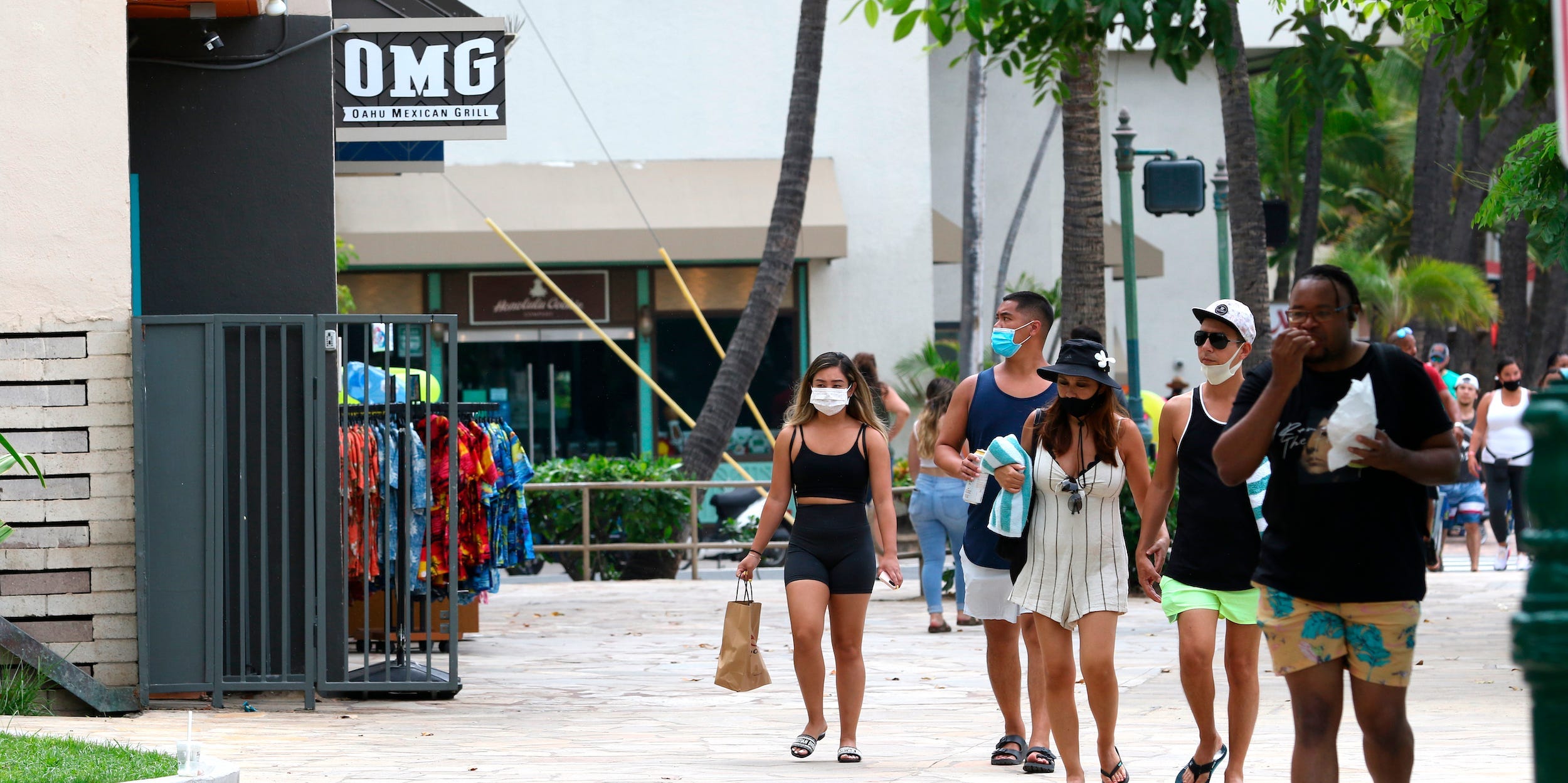
Caleb Jones/AP Photo
- US gross domestic product grew at an annualized rate of 2.0% in the third quarter of 2021.
- That fell short of the median estimate of a 2.7% gain and marked the slowest growth of the COVID recovery.
- The quarter saw the Delta wave peak in September, as well as the fallout from the global supply-chain crisis.
US economic output grew less than expected through the third quarter of 2021 as the recovery fell to its slowest pace since the pandemic began.
The country's gross domestic product grew at an annualized rate of 2.0% over the three months that ended in September, the Commerce Department announced Thursday. Economists surveyed by Bloomberg expected the economy to grow at a 2.7% rate.
The growth marked the slowest rate of expansion since the first quarter of 2020, which showed the first fallout from the COVID crisis. It also shows a sharp deceleration from the second quarter's annualized growth rate of 6.7%.
Growth was driven by strong spending, private investment in inventory, and state and local government spending, according to the report. Still, that was offset by declines in federal government spending, exports, and residential fixed investment. And while spending did grow, the quarterly gain of 1.6% paled in comparison to the 12% boom seen in the second quarter.
Several headwinds contributed to the slowdown into the fall. The story of third-quarter growth was the story of the Delta variant. Case counts started to rebound in July and peaked in mid-September. Though widespread vaccination kept virus deaths from climbing at the same rate, revived restrictions and fears of catching the virus dampened hiring through the quarter.
The global supply chain crisis also weighed on the recovery. Factory backlogs, shipping delays, and widespread shortages plagued the US economy through the third quarter and left suppliers struggling to service Americans' massive demand. The quarter also lacked support from major government stimulus, which helped drive historically strong growth in recent quarters.
Other factors buoyed growth and suggested the recovery held strong amid the Delta wave. While the country endured fresh economic restrictions, consumer spending continued to climb. Job growth, while recently missing forecasts, avoided turning negative, and jobless claims steadily fell. And while inflation has held at decade-highs, monthly price increases have declined significantly from the levels seen in the second quarter.
Dit artikel is oorspronkelijk verschenen op z24.nl
